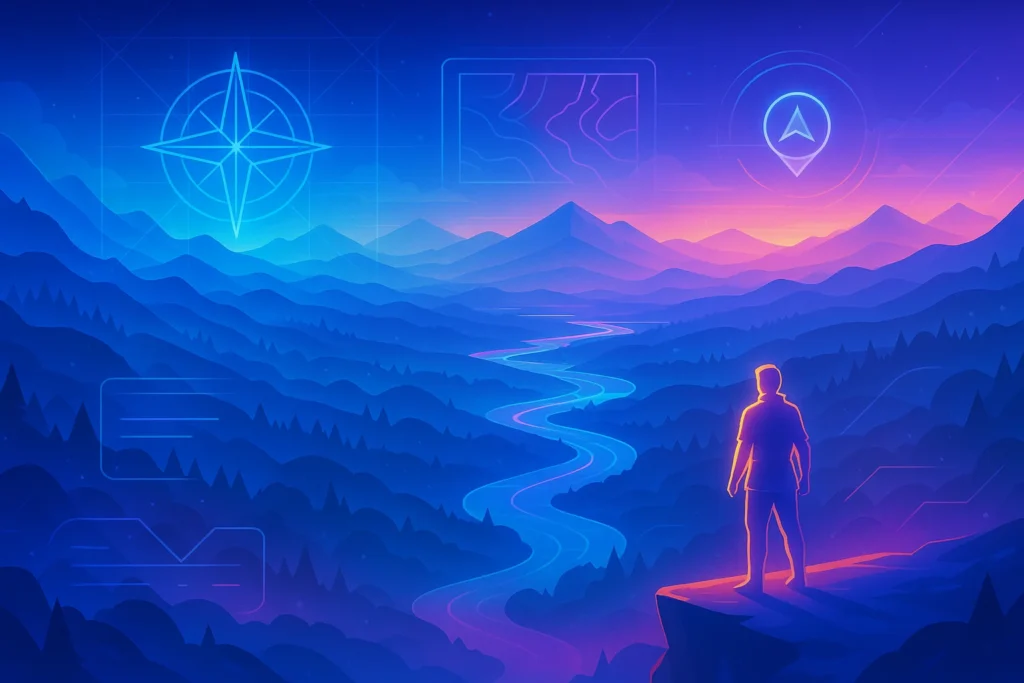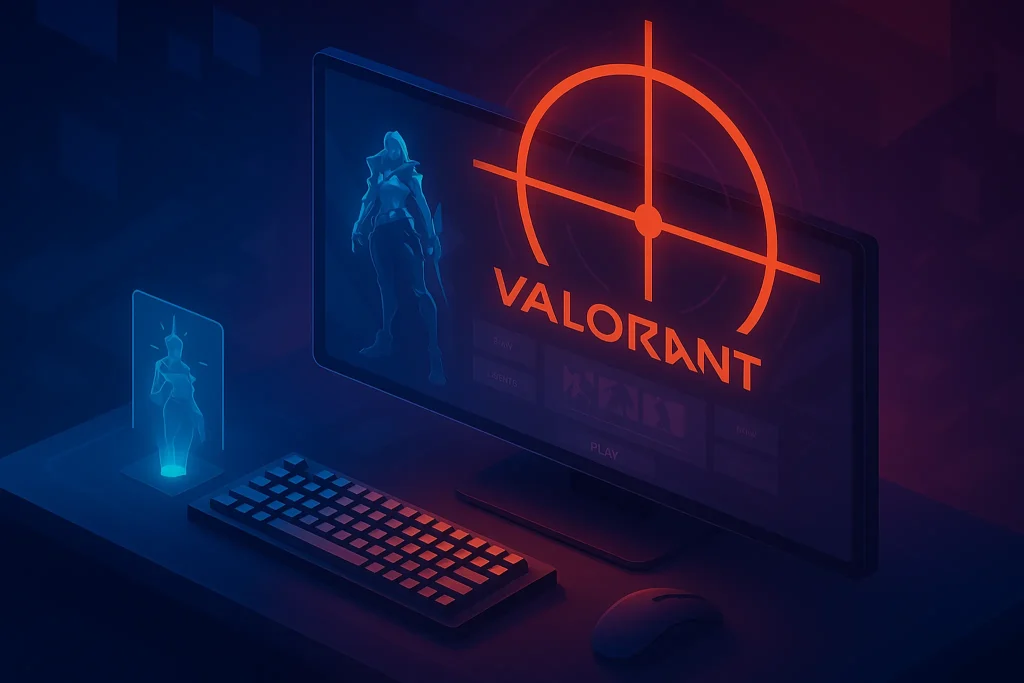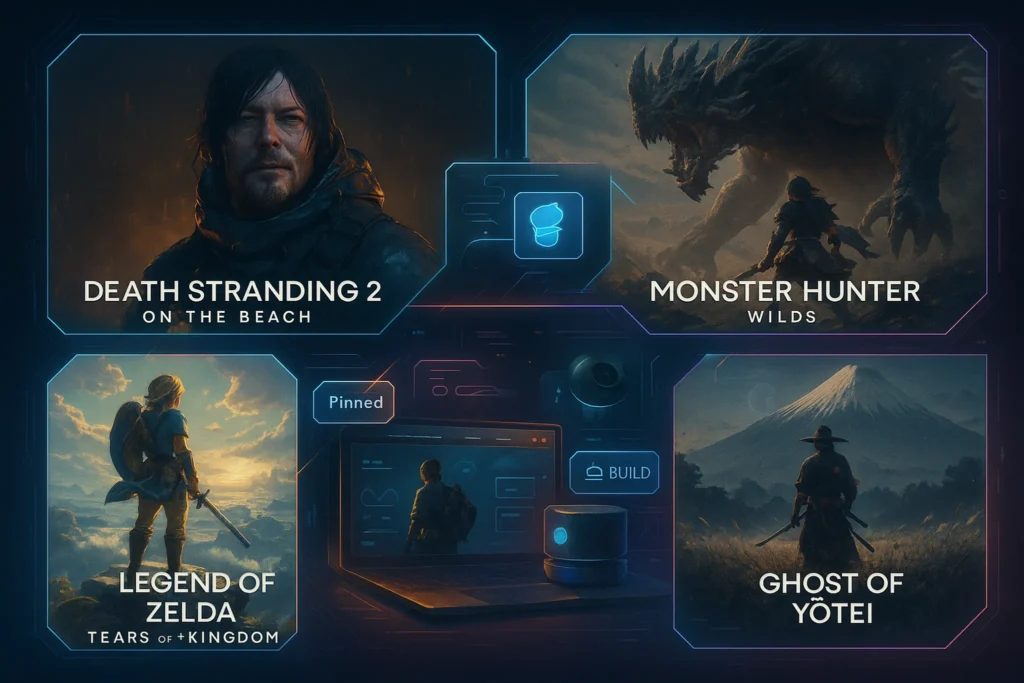Introduction: Why Open-World Games Keep Us Hooked
There’s something magical about open-world games. They aren’t just titles you “play” but universes you step into, filled with mysteries, characters, and adventures that unfold at your own pace. Unlike linear games, open-world titles give you freedom: freedom to explore, freedom to create your own path, and freedom to play at your own rhythm. From climbing the tallest mountains to uncovering hidden lore in forgotten ruins, these games provide experiences that feel endless and deeply personal.
In 2025, the genre has matured into an ecosystem of choices—from AAA blockbusters like Elden Ring to indie experiments that redefine what exploration can mean. But which titles truly capture the spirit of “endless exploration”? Let’s dive deep.
💡 Nerd Tip: Ready to lose yourself in a digital world? Grab your controller and let’s begin.
The Allure of Endless Exploration in Gaming
Exploration is more than wandering; it’s about discovery. Great open-world games balance vast maps with meaningful details. You’re not just filling a map with icons—you’re uncovering ecosystems that feel alive. Whether it’s tracking the footprints of a mythical beast, discovering a hidden village with side quests, or simply watching a virtual sunset, exploration is emotional as much as it is mechanical.
This is why titles like The Legend of Zelda: Breath of the Wild remain timeless. They give you the tools to play creatively, not just follow instructions. It’s also why upcoming expansions like the Elden Ring DLC: What to Expect and How to Prepare are so highly anticipated—players crave worlds that evolve and surprise them.
Top Open-World Games with Endless Exploration
1. The Legend of Zelda: Breath of the Wild & Tears of the Kingdom
Nintendo redefined open-world design with Breath of the Wild, and its sequel expanded the boundaries even further. These games reward curiosity at every turn. Climb a mountain, and you’ll find shrines, puzzles, and breathtaking landscapes. Experiment with physics, and you’ll uncover creative solutions to challenges. The games transform exploration into a playground of possibility, setting the gold standard for the genre.
For Switch owners looking for more story-rich options, our breakdown of the Best Story-Driven RPGs for Nintendo Switch is worth exploring—you’ll find worlds equally rich in narrative and design.
2. Elden Ring
Elden Ring is the ultimate mix of brutal combat and endless exploration. The Lands Between offers sprawling regions, each with its own lore, enemies, and hidden bosses. Unlike many open-worlds where filler content dominates, every corner of Elden Ring feels handcrafted with purpose. Exploration isn’t just optional—it’s the heart of the experience.
With the Elden Ring DLC arriving, players are preparing to re-immerse themselves in one of gaming’s richest universes. It’s a testament to how a game can make even failure feel rewarding when the world around you is this captivating.
3. The Witcher 3: Wild Hunt
Even years after release, The Witcher 3 remains a masterclass in open-world storytelling. Its lands are vast, but what makes exploration rewarding is how every village, forest, and ruin is packed with quests that feel personal. You’re not just collecting loot—you’re unravelling human stories, from tragic romances to political intrigue.
The game exemplifies why narrative depth matters as much as exploration. It doesn’t just offer places to see, but reasons to care about them. Few games balance scale and intimacy this well.
Not every multiplayer session has to be competitive. Many couples are turning game nights into a way to strengthen their bond. In our roundup on Best Co-Op Games for Couples: Play, Bond, and Level Up Together, we cover everything from Stardew Valley to Diablo IV that make long-distance or couch co-op gaming unforgettable.
📬 Want More Smart Gaming Insights?
Join our free newsletter for weekly breakdowns on the best games, tools, and trends shaping the future of play—delivered straight to your inbox.
🔐 No spam. No noise. Just value-packed gaming content from NerdChips.
4. Skyrim (and Its Infinite Mods)
No list of open-world exploration is complete without Skyrim. Over a decade old, its world continues to thrive thanks to an endless stream of mods. The snowy mountains, mysterious caves, and dragon encounters remain iconic. For players who want endless exploration, Skyrim’s true strength lies in replayability—you can always discover something new, especially with mods reshaping the experience.
This endless reinvention mirrors why the Most Anticipated Indie Games of 2025 are so exciting. Indie devs often take risks that make exploration feel fresh in ways big studios rarely attempt.
5. Red Dead Redemption 2
Rockstar’s masterpiece isn’t just an open-world; it’s a simulation of life in the American frontier. Every detail, from hunting and fishing to random encounters on the road, feels authentic. The map is enormous, but its soul lies in the little things: a stranger’s story, a breathtaking sunrise, or the bond with your horse.
Exploring this world isn’t about ticking objectives—it’s about inhabiting a living, breathing universe. It sets the bar for immersion in open-world storytelling.
6. Genshin Impact
For free-to-play players, Genshin Impact demonstrates how an open-world can thrive on accessibility. With its vibrant art style, elemental combat, and constant updates, it keeps exploration alive by steadily expanding its map and lore. Unlike many free-to-play models, Genshin proves you can explore without being locked behind aggressive paywalls.
If you’re interested in similar accessible options, check our breakdown of Top 10 Free-to-Play Games That Aren’t Pay-to-Win, where discovery and fun don’t cost a fortune.
7. No Man’s Sky
Few games embody “endless” as literally as No Man’s Sky. With billions of procedurally generated planets, you could explore for a lifetime and never see it all. What makes it powerful today is the redemption story: from rocky launch to one of the most supportive, content-rich games on the market. Its appeal lies in exploration at a cosmic scale, giving players a digital galaxy to call their own.
For players with modest PCs, pairing this with Best Cloud Gaming Services for Low-End PCs can unlock massive worlds without needing expensive hardware.
🎨 Quick Comparison Table
| Game | Exploration Style | Why It Stands Out |
|---|---|---|
| Zelda: BOTW/TOTK | Physics-based sandbox | Freedom and creativity in design |
| Elden Ring | Harsh but rewarding | Every discovery feels purposeful |
| Witcher 3 | Story-driven exploration | Emotional depth in every quest |
| Skyrim | Infinite modded replayability | Always something new to discover |
| Red Dead Redemption 2 | Immersive realism | World feels alive and authentic |
| Genshin Impact | Free-to-play fantasy | Constant updates keep it fresh |
| No Man’s Sky | Procedural universe | Endless exploration by design |
🎮 Want to expand your gaming library? Check out exclusive deals on Game Pass Ultimate and dive into dozens of open-world titles without breaking the bank.
The History & Evolution of Open-World Games
Open-world games didn’t just appear overnight. The seeds were planted decades ago when developers started experimenting with giving players more freedom than linear levels could allow. Early classics like The Legend of Zelda (1986) hinted at this design philosophy by letting players roam an expansive map without strict direction. Later, GTA III (2001) became a cultural reset, showing the world that open-world gameplay could be cinematic, immersive, and narratively rich. From there, the genre exploded. The Elder Scrolls IV: Oblivion introduced sprawling fantasy environments, Red Dead Redemption recreated the Wild West with stunning realism, and Minecraft redefined the idea of “endless exploration” with procedural generation. By the time Elden Ring arrived in 2022, blending FromSoftware’s trademark difficulty with a seamless open-world experience, the genre had matured into a gold standard for gaming freedom. Tracing this evolution helps us appreciate why today’s open-world games are so polished—they’re the product of decades of trial, error, and innovation.
The Psychology of Exploration in Games
Why are gamers so obsessed with open worlds? The answer lies in psychology. Humans are naturally wired to explore—the same curiosity that drove ancient adventurers across oceans fuels us digitally when we wander Skyrim’s mountains or the deserts of Hyrule. Open-world games trigger dopamine through discovery: uncovering hidden areas, completing quests off the beaten path, or finding easter eggs. They also tap into “autonomy,” a key motivator in self-determination theory, by allowing players to choose how and when to engage with the game world. Unlike linear campaigns, open-world titles give a sense of control and agency, which creates immersion and personal investment. This is why players can spend hundreds of hours in a single title without feeling repetitive burnout—the world feels alive, unpredictable, and theirs to uncover.
Replayability & Longevity Factor
One of the strongest appeals of open-world games is their replayability. Even after completing the main storyline, players often return for side quests, hidden lore, or simply to experiment with different playstyles. Take Skyrim, for example—it remains relevant over a decade later thanks to an endless supply of mods that continuously reshape the experience. Similarly, The Witcher 3 encourages multiple playthroughs because choices impact outcomes in meaningful ways. Games like Breath of the Wild excel at emergent gameplay, where creative problem-solving (like using physics to defeat enemies or traverse landscapes) makes each run unique. Longevity isn’t just about campaign hours; it’s about how a game keeps surprising you after 50, 100, or even 500 hours. For modern players investing their money and time, replay value is one of the clearest measures of quality in an open-world title.
The Tech Behind Open Worlds
Building worlds of infinite possibility isn’t easy—it’s a technical masterpiece. Many developers now rely on procedural generation to create vast landscapes without manually designing every inch. No Man’s Sky is the poster child here, with over 18 quintillion planets generated algorithmically, ensuring no two playthroughs are alike. AI-driven NPCs are another breakthrough: rather than scripted loops, characters now adapt to your actions, making towns and settlements feel dynamic. Physics engines also play a massive role. Whether it’s climbing any surface in Breath of the Wild or using wind currents in Genshin Impact, physics-based systems bring authenticity to exploration. As hardware power grows and cloud computing expands, the behind-the-scenes tech is enabling game worlds that are not only bigger but smarter—reacting to players instead of just existing for them.
The Future of Open-World Exploration
If today’s open-world games feel limitless, the future promises even more. With VR and AR blending physical and digital realities, players may one day step directly into worlds that evolve around them. AI will likely design side quests on the fly, tailoring missions to your playstyle so no two experiences are identical. Cloud gaming services will remove hardware limits, meaning even low-end PCs could handle gigantic, realistic environments streamed in real time. Developers are also exploring “persistent worlds,” where events happen whether you’re online or not, making exploration feel truly alive. Imagine logging back into a game only to find a town rebuilt, forests burned from a battle, or NPCs aging naturally over time. The future of open-world exploration won’t just be about bigger maps—it’ll be about worlds that remember, react, and grow with you.
Player Archetypes: What Kind of Explorer Are You?
Not every gamer approaches open worlds the same way. Some are driven by story, others by discovery, and some by pure chaos. To make it clearer, here’s a quick archetype breakdown:
-
The Explorer: Loves climbing every mountain, opening every chest, and finding every hidden secret. Games like Breath of the Wild or Assassin’s Creed: Odyssey are built for them.
-
The Achiever: Obsessed with 100% completion. They’ll grind for achievements, unlock every trophy, and max out their character in games like Skyrim or Elden Ring.
-
The Story-Lover: More interested in narrative immersion than mechanics. For them, titles like The Witcher 3 or Red Dead Redemption 2 provide emotional, cinematic journeys.
-
The Social Gamer: Thrives in multiplayer sandboxes, whether teaming up in GTA Online or building together in Minecraft. Their joy comes from shared exploration.
👉 Knowing your archetype helps you choose which open-world game will give you the most satisfaction. Instead of asking “Which is best?”, ask “Which is best for me?”
🧠 Nerd Verdict
Open-world games are more than escapism—they’re digital worlds that grow with us. Whether you prefer the narrative pull of The Witcher 3, the creative freedom of Zelda, or the cosmic expanse of No Man’s Sky, the best open-worlds share one trait: they make curiosity itself the ultimate reward. As technology advances, we’re seeing worlds that aren’t just bigger, but smarter, richer, and endlessly replayable.
❓ FAQ: Nerds Ask, We Answer
💬 Would You Bite?
If you had to pick just one world to get lost in for the next year, which game would it be?
Drop your choice below—we’re curious to see where your adventures take you. 👇



